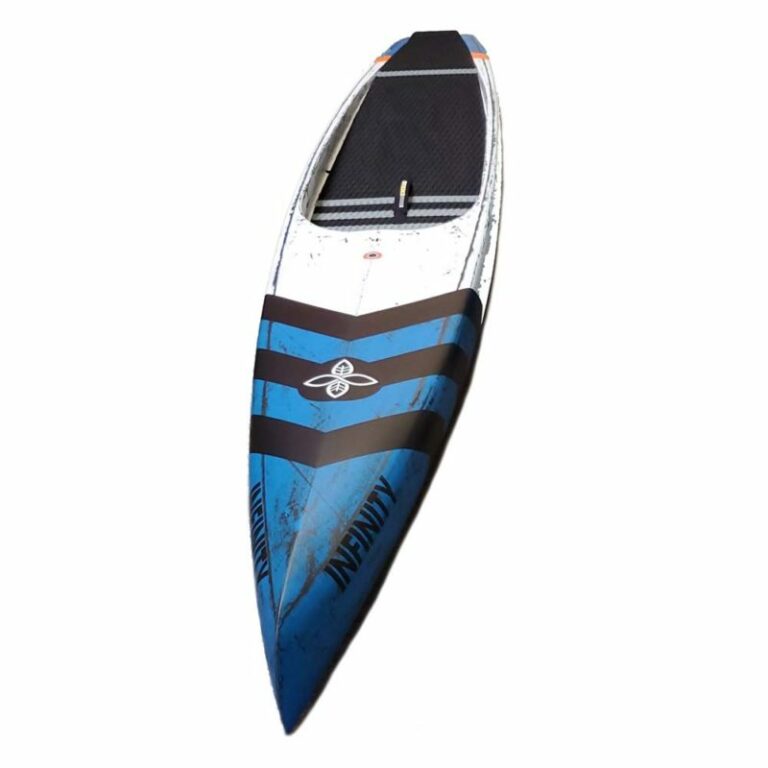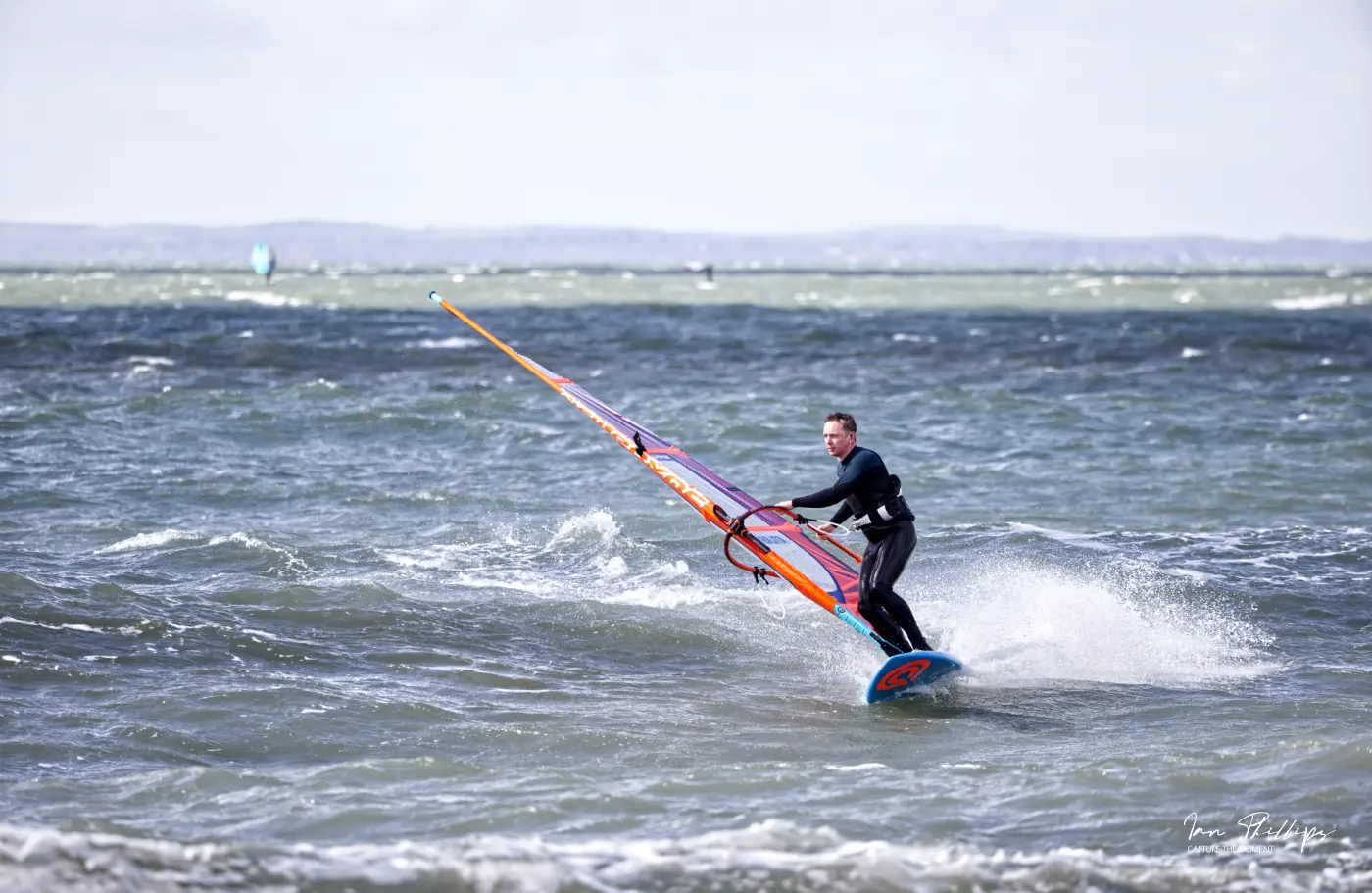What defines a flat water raceboard

So what is flat water
Flat water doesn’t strictly mean, glassy flat conditions. This sort of thing is super rare, as even 2 mph wind will blow some chop on top.
What we really mean is not open water waves, running swells, shore break or traumatic water conditions.
It is pretty subjective, as some really good paddlers can make boards work for them, but we’re basing this guide on a general interpretation.
From my ow personal experience, I like to use something like the Infinity Whiplash, on canals such as Chichester Canal, or in Chichester Harbour, where conditions are consistently smooth to small chop on a windy day.
The general shape
If you look at flatwater sup boards, you will find they all follow a similar general outline.
A pointed nose that slowly widens towards the standing area, which then holds its width open, before thinning to a squared off tail shape.
This shape lends itself to being efficient in the water, much like an arrow piercing the air. The nose sits low in the water, splitting it apart as the board moves forward.
Because the board doesn’t widen too fast, it keeps the low resistance outline, which means the board glides for longer through and after the stroke, which is so important for top speed and efficiency over distances.
The squared off tail helps with stability towards the back of the board compared to having a fast pin tail that makes the board all the more twitchy. Ultimately you need to put power down and that won’t happen if you’re wobbling a lot.


Looking underneath
The picture we have here is of the brand new Whiplash that has some radical features, but in essence you are looking for some key characteristics to make the board fast.
Under the nose area, will have a rounder, convex shape as this helps to open the water up and is highly efficient, but will be less stable and roll.
As you come back, the boards will flatten off to increase stability. This should happen in front of the standing area.
Most boards now move into a concave which increases surface area and flow, along with stability.
As you near the tail/fin area things begin to vary. In some cases, the concaves flatten out or increase, but the biggest thing is to reduce confused water. You’re looking for a smooth water release.
The key to going fast on flat water is keeping the board level ad letting the flat rocker line work at its very best. If you’re bouncing up and down erratically trying to get power down, you will find a lot of wasted energy being used for little to no gain over a distance.
A good stroke
Aside of a good board, a good stroke and power will bring on the speed and then it is a case of maintaining it.
We offer lessons in paddle technique for advanced paddlers, working with video and integrate your own build characteristics to maximise gains.
Check out our sup lessons and give us a call to discuss your own requirements.





